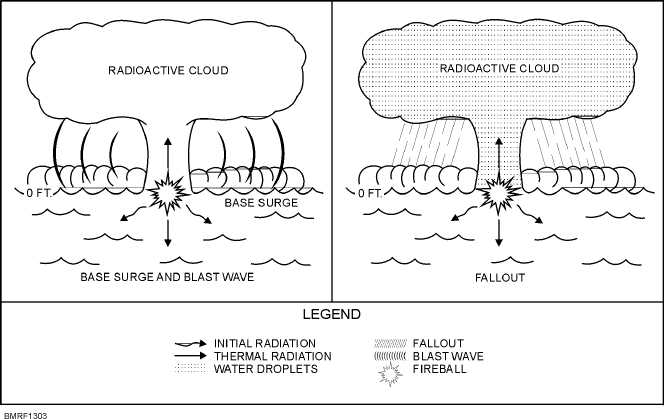The effective range of blast damage is less than that
from an air blast because much of the energy is
transmitted in the form of a ground or water shock wave.
Near ground zero, however, the severity of the shock
wave is greater than that of the blast wave. The distance
at which thermal radiation (heat) is hazardous is slightly
less than that from an air blast.
Nuclear radiation is of two types—initial and
residual.
Initial Radiation
Initial radiation occurs within the first minute after
an explosion; residual radiation occurs thereafter. In
most instances, initial radiation is of little consequence
because the lethal range of its effects is less than that of
the blast wave.
Residual Radiation
Residual radiation for a surface burst is dangerous
because the large amount of surface material drawn into
the cloud is heavy enough to fall while still highly
radioactive. Additionally, the fallout area of a surface
blast is much larger than the area affected by heat and
shock.
SUBSURFACE (UNDERWATER) BURST
In an underwater burst (fig. 13-4) a fireball is
formed. However, it’s smaller than the fireball of an air
burst and is not normal. The explosion creates a large
bubble (cavity) that rises to the surface where it expels
steam, gases, and debris into the air. Water rushing into
the cavity is thrown upward in the form of a hollow
column that may reach a height of several thousand feet.
When the column collapses, a circular cloud of mist,
called the base surge, is formed around the base of the
13-9
Student Notes:
Figure 13-3.—A surface blast.


